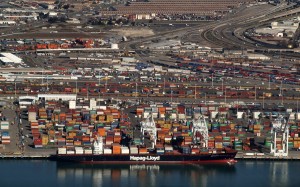After almost ten months of negotiations that resulted in a standoff between the Pacific Maritime Association (PMA) and International Longshore and Warehouse Union (ILWU), the two parties reached a tentative agreement to get twenty-nine ports on the West Coast back up and running.
With a dispute affecting the supply chains of thousands of businesses, the shutdown after months of maneuvering from both sides was alarming enough to have President Obama dispatch U.S. Secretary of Labor Tom Perez and Federal Mediation and Conciliation Service Deputy Director Scot Beckenbaugh. An estimated $7 billion was lost by retailers in elevated carrying costs and lost sales, according to an article on TruckingInfo.com, and it will take an estimated three months to return to normal activity.
While retailers across the country who rely on trade with Asian nations are relieved, there is still looming anxiety. In addition to the fact that the agreement is only supposed to last for five years, it is a tentative deal and won’t be voted on by members of the ILWU until April. If the tentative agreement is voted down by union members, the two parties might find themselves a little further back than Square One.
What’s more is that the tentative agreement is already showing signs of fraying. According to the Journal of Commerce, the largest marine terminal at the Port of Oakland is experiencing a shutdown due to manning requirements dictated in the new agreement. Again, each side is pointing fingers at the other, with the PMA accusing the ILWU of instigating more slowdowns and stoppages since the tentative agreement was reached on February 20th.
The last labor dispute between the two sides was in 2002, and because of lingering mistrust and lack of a clear future stability, many are looking towards the East and Gulf Coasts and the widened Panama Canal for an alternative to the contentious relations at West Coast ports. As the shipping industry enters into “slow season”, decreased supply and uncertainty are looming large.


